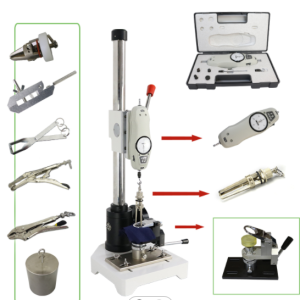GB/T 36276-2018 Thermal Runaway Test Machine-HUST TONY
试验机-300x224.jpg)
Thermal Runaway Test Machine
Equipment composition: explosion-proof box (can be customised to be a temperature-controlled explosion-proof box), controllable heating plate, overcharge system, computer testing system; optional components: puncture trigger system. Thermal runaway trigger methods: heating and overcharge trigger methods; optional ‘puncture’ trigger method. Testing objects: batteries with a capacity range of 3~300Ah. (or customised according to battery specifications)
Youtube video :Click here
Trial Objective
Thermal runaway related test requirements:
The standard strengthens the detection and evaluation of the thermal characteristics of battery cells and battery modules, and innovatively proposes a safety bottom line for safe operation. Adiabatic temperature rise test and thermal runaway test for battery cells, as well as thermal runaway diffusion test for battery modules have been added. Through these tests, parameters such as the temperature and temperature rise rate of the battery thermal runaway can be obtained, the potential safety hazards of thermal runaway can be identified in advance, and the thermal consistency of the same batch of batteries can also be determined.
Thermal runaway test method:
Use a flat or rod-shaped heating device, the surface of which should be covered with ceramic, metal or insulating layer, and the heating device should be in direct contact with the battery. After the initial charging of the battery cell, it will continue to charge with 1C constant current for 12min, and then start the heating device to continuously heat the test object with its maximum power, and when thermal runaway occurs or the temperature of the monitoring point reaches 300°C, the trigger will be stopped, the heating device will be turned off, and the test results will be recorded.
Thermal runaway judgment method:
When the voltage drop occurs in the test object, and the temperature rise rate of the monitoring point is > 1°C/s; or when the temperature of the monitoring point reaches the protection temperature of the battery, and the temperature rise rate of the monitoring point is > 1°C/s, it is determined that the battery cell has thermal runaway. During the heating process and within 1 hour after the end of heating, if a fire or explosion occurs, the test should be terminated and judged to have thermal runaway.
Thermal runaway diffusion test method:
One of the two modes of overcharge and heating can be selected as the thermal runaway triggering mode, and the battery cell that is easy to transfer heat such as the closest centre position in the battery module can be selected as the thermal runaway trigger object. The voltage and temperature of the triggering object and the two nearest battery cells are monitored to determine whether the thermal runaway occurs between the trigger object and the adjacent battery cells, so as to determine whether the thermal runaway diffusion occurs in the battery module.Thermal runaway diffusion determination method: When thermal runaway occurs in the battery cell adjacent to the trigger object, it is judged that the battery module has thermal runaway diffusion. During the thermal runaway triggering process and within 1 hour after the end of the trigger, if a fire or explosion occurs, the test shall be terminated and judged to be a thermal runaway diffusion of the battery module.
Features
试验机.jpg)
Technical Specifications
Trigger mode: | Heating trigger mode; (Optional: overcharge, acupuncture trigger mode.) | |||
Heating trigger mode: | 2 channels, 2 channels are reserved for standby (One channel round heating wire, the other channel square heating plate) | |||
Maximum heating power: | up to 3KW, single channel (2 channels, spare 2 channels are reserved for accessories installation position) | |||
Power adjustment mode(Both modes must be satisfied): | can choose to heat with fixed heating power, Or constant heating rate heating (3~7°C/min) can be adjusted | |||
Heating plate voltage: | AC 220V, 50HZ | |||
Matching (Overcharged.) Trigger) The explosion-proof box is reserved for wire holes | Specification: | JD-10V300A-2CH | ||
| Charging modes: | constant current charging, constant voltage charging, constant current constant voltage charging, constant power charging.
| ||
| Charging cut-off conditions: | voltage, current, relative time, capacity, -△V. | ||
| Voltage range: | Charging: | 0V-10V (device port) | |
|
| Discharge: | 1.5V-10V (device port) (Optional: deep discharge to -5V, for charge and discharge capacity cycle, overcharge and over-discharge test) | |
| Current range: | Charge: | 0-300A | |
|
| Discharge: | 0-300A | |
| Accuracy: | ±0.1% of FS , ambient temperature 15°C-35°C | ||
Battery voltage acquisition channel: | 4 channels (≥ 4 channels optional) | |||
Battery temperature measurement channel: | 8 channels (≥ 8 channels optional) | |||
Acquisition rate: | 10Hz and 100Hz0 (adjustable) | |||
Control mode: | PC software control | |||
Thermal runaway control cabinet external dimensions: | 700*650*1360mm(W*D*H) | |||
Explosion-proof box inner box size: | 600*600*600mm and1000*1000*1000optional (or specified specifications) Stainless steel thickness 5mm steel structure reinforcement (Note: Explosion-proof boxes of different specifications and sizes can be customized) | |||
The total weight: | 500kg | |||
Power supply of the equipment: | AC380V 5KW | |||
Standards
GB/T 36276-2018 / GB38031-2020

